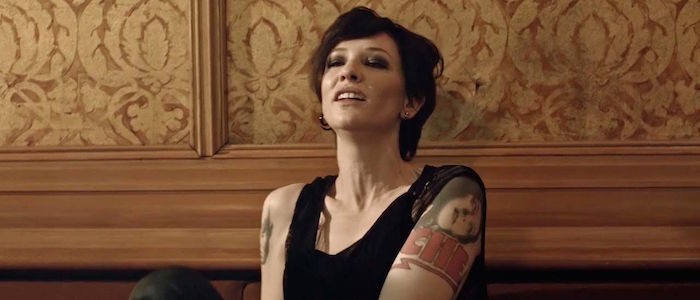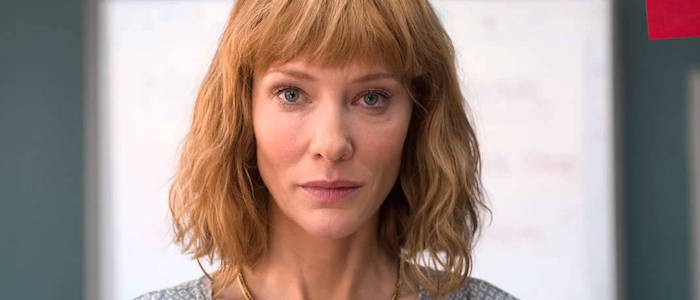'Manifesto' Review: Cate Blanchett Gives 13 Astonishing Performances In A Mixed Bag Of A Movie
It's hard to pinpoint exactly what Manifesto really is. A collaborative art project? A chance to marvel at the majesty of Cate Blanchett for 90 minutes? A history lesson on the many movements that have swept through art and politics over the decades? This is all true. But is it unmissable? That's where things get tricky. On the surface, it seems hard to see the appeal of the film outside of the festival circuit. Manifesto might play well to film and art geeks, but will average moviegoers be lured in by seeing Galadriel play dress-up for ninety minutes? It's unlikely and yet, by digging deeper into just what Manifesto is trying to accomplish, there is room for the film to make a considerable impact on a generation slowly becoming more politically conscious and active with each passing day.
Manifesto places Blanchett in a series of loosely overlapping vignettes playing 13 different characters, among them a newscaster, a homeless man, a puppeteer, a punk rocker and a schoolteacher. Throughout the film and in several different and often creative settings, Blanchett delivers snippets of twelve manifestos, ranging across a variety of movements throughout the art world: Dadaists, Futurists, Suprematists, as well as the works of dancers, architects and filmmakers. It's a testament to her enormous talent that Blanchett is able to embody each character as fully as possible, speaking in different accents and bringing different energy and inflections to each body of work being recited.
Some of the sequences fall short, but several are standouts, particularly the film's final vignette, featuring Blanchett as a teacher in a classroom, giving her students their lesson for the day: an abbreviated snippet of Jim Jarmusch's "Golden Rules of Filmmaking." Blanchett reminds her students of Rule #5, namely that "nothing is original," to steal with authenticity and not to hide it and to "remember what Jean-Luc Godard said: 'It's not where you take things from — it's where you take them to.'"
From here, Blanchett walks through the classroom as the children begin to color, pausing to comment on the children's progress with snippets from the Dogme 95 manifesto written by directors Lars von Trier and Thomas Vinterberg. "Oh no," she coos at one child, tapping their paper. "Shooting must be done on location. Props and sets must not be brought in," she adds, quoting the manifesto. It's easily one of the more clever uses of the manifestos and one that received the heartiest reception from the crowd of film critics at the screening.
Another standout performances comes during the Conceptual Art and Minimalism manifesto readings, which are done under the guise of a news reader and reporter. Here, Blanchett plays a cable news host, reading snippets from Sol LeWitt's "Paragraphs on Conceptual Art" and "Sentences on Conceptual Art" with the intonations and emphasis the audience would expect of an anchor on CNN or MSNBC. But the segment gets especially clever when Blanchett checks in with a reporter on location — who is also played be Blanchett. Here, she poses questions to herself and answers them, a verbal tennis match of manifestos being bounced back and forth in what is easily the film's greatest example of Blanchett's supreme talent.

The film gives us Blanchett at the head of a large funeral procession, where she derides the mourners gathered at a grave by reciting manifestos of the Dadaism, an avant-garde art movement which celebrated the irrationality and the grotesque in rejection of the logic and aesthetics of capitalism. She is an upper-class housewife praying to Pop Art, a homeless man spouting Marxism and a drunken, tattooed punk rocker ranting about Stridentism backstage at an after party. At every turn, Manifesto manages to keep viewers guessing what might comes next, sometimes landing the full impact of the work through a clever setting and memorable characters who manage to breathe life into the words they are reciting. Still, other vignettes are forgettable and flat, the manifestos feel clunky and archaic. Like the sprawl of art movements covered, Manifesto is a mixed bag of successes and failures.
Manifesto is the brainchild of visual artist Julian Rosefeldt, who manages to create his own manifesto by weaving together artist manifestos from across the 20th century. It is as much an homage as well as its own statement on the state of both the art world and the changing political landscape of recent years, where racist ideology and Nationalism have wormed their way back into the mainstream narrative. History is circular and to Rosefeldt, looking back on the manifestos of past years give us more than just performance art, they give us a blueprint on how to navigate the changing tide of ideology that might seem foreign at first, but is really just the past in disguise. "Know history or you're doomed to repeat" is seems to be the mantra of Manifesto. But it still seems uncertain that many audiences will discover his message.
***
Manifesto opens in New York on May 10 and expands to Los Angeles and selected cities on May 26.
